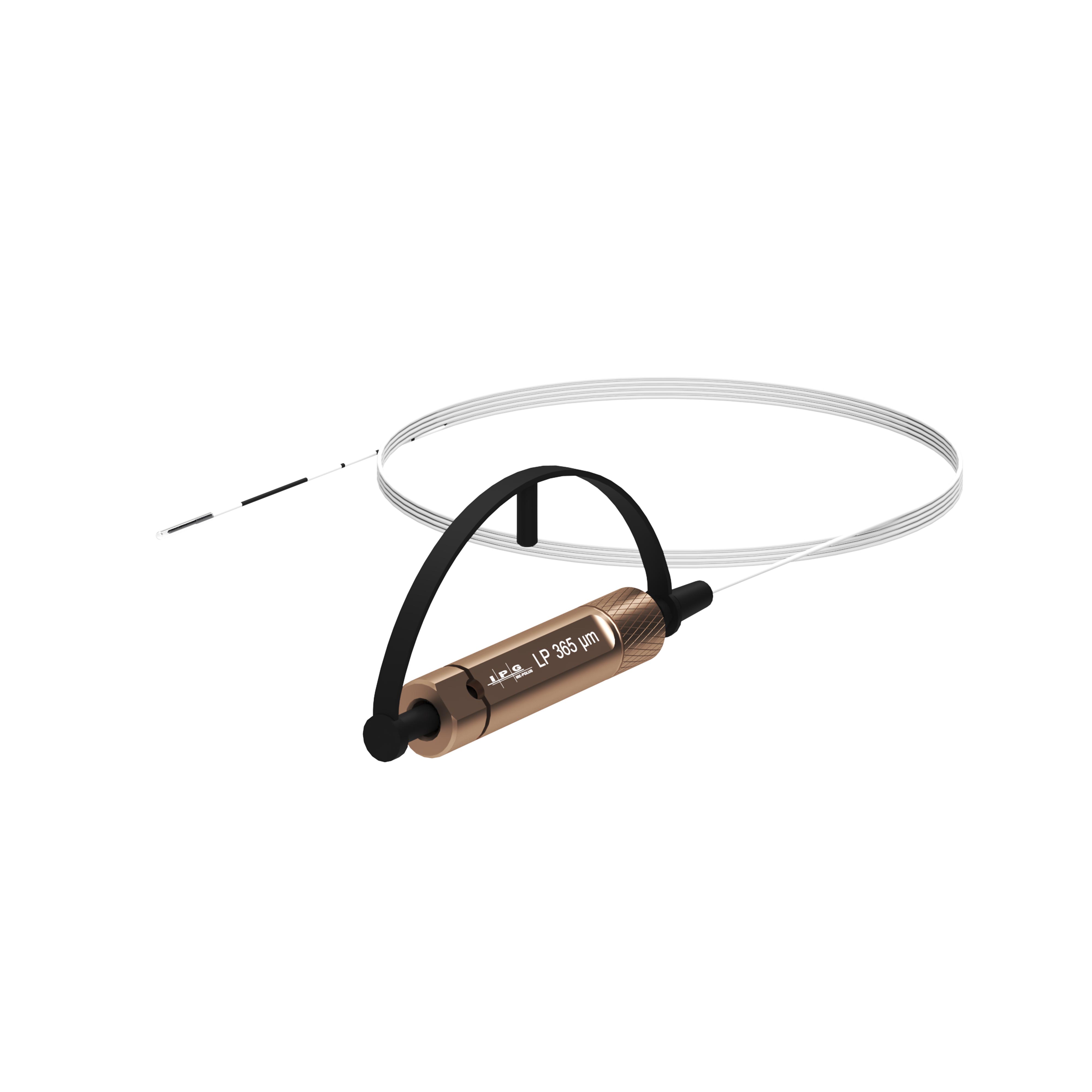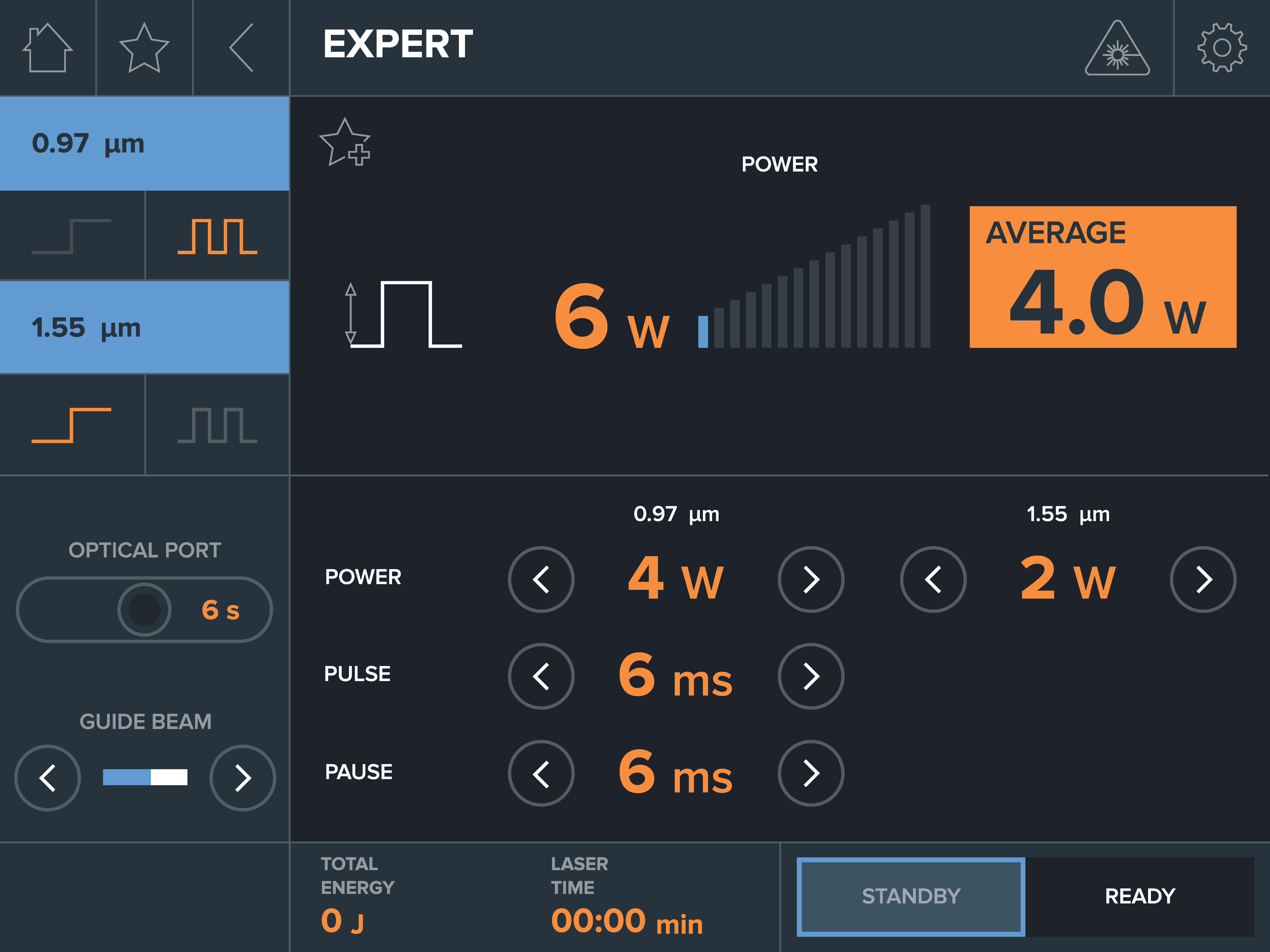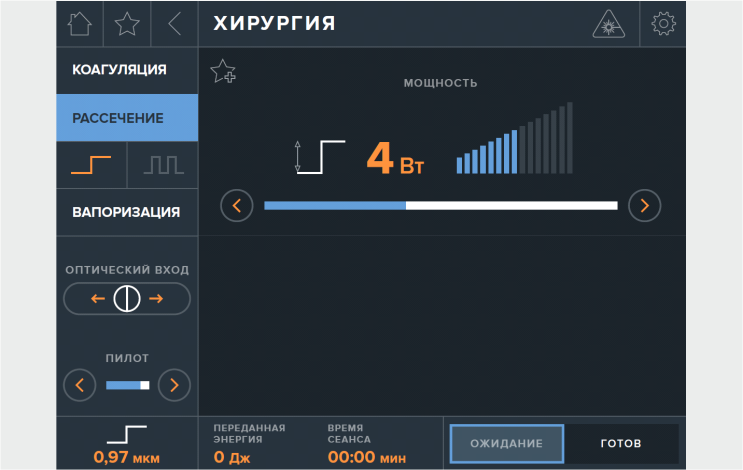FiberLase S
An ideal instrument for performing minimally invasive,
endoscopic and puncture operations
FiberLase S
A new 0.97 micron and 1.55 micron wavelength laser that is the ideal surgical tool for interdisciplinary medical institutions
For minimally invasive, endoscopic and puncture procedures using laser light delivered through a flexible fiber tool
Download FiberLace S brochure

FiberLase S with two independently adjustable wavelengths allows you to change the nature of exposure during surgery
The functioning mechanism of the laser device is based on the conversion of the light energy of laser radiation into heat when it is absorbed in biological tissues. This allows for well-controlled local heating providing coagulation, vaporization, or tissue dissection depending on the surgeon's objectives.
The most popular wavelengths for soft tissue work are the 0.97 and 1.55 μm lasers.

Application of the 0.97 µm wavelength
- GENERAL SURGERY
- ENT (dissection/vaporization)
- DENTISTRY
- GYNECOLOGY
- NEUROSURGERY
1.55 micron wavelength application
- PHLEBOLOGY (EVLT)
- PROCTOLOGY
- ENT (coagulation)
- TRAUMATOLOGY AND ORTHOPEDICS
When increasing the wavelength of laser radiation in the range of 0.97 µm → 1.55 µm one observes:
- Increase of water absorption coefficient
- Decrease of hemoglobin absorption coefficient
Laser radiation with a wavelength of 0.97 μm is strongly absorbed by hemoglobin while water absorption is weak, which provides high cutting properties necessary to perform bloodless soft tissue surgery.
Radiation at a wavelength of 1.55 μm is absorbed in water much more strongly than radiation at a wavelength of 0.97 μm. This effect is important for a number of applications such as interstitial thermotherapy, endovenous laser coagulation, and other applications where carbonation at the point of exposure is undesirable
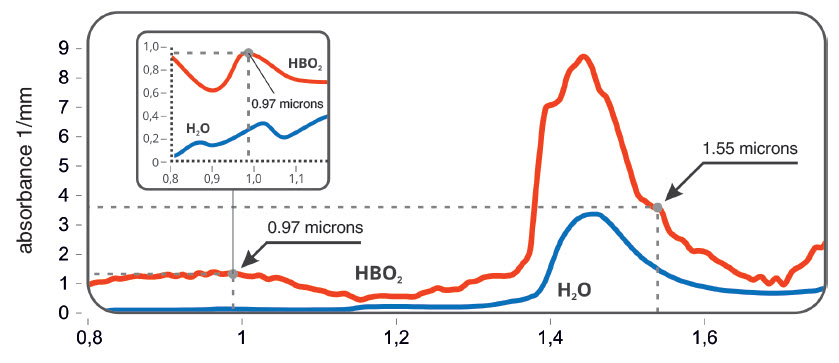
With the right choice of laser radiation parameters, exposure is accompanied by minimal tissue swelling, and the level of pain and the probability of postoperative complications are reduced.
FiberLase S is used with IPG Surgical Fiber LP and IPG Surgical Fiber Radial
IPG Surgical Fiber LP
Bare fiber for VTLase, FiberLase S lasers
Designed for dissection, vaporization and coagulation of tissues during open, endoscopic and laparoscopic surgeries
IPG Surgical Fiber Radial
Radial fiber for VTLase, FiberLase S lasers
Designed for use in phlebology for endovenous laser coagulation
FiberLase S
- Wide range of surgical applications
- High cutting and coagulation properties
- Use in any anatomical region due to the flexibility of the fiber and its compatibility with endoscopes
- Contact, remote and interstitial applications due to different positioning of the fiber depending on the treatment area
- A wide range of radiation parameters
- Short impulse exposure capability
- The SMA-905 protection system against connector contamination
- Regular servicing is not required
- 3 years warranty
Intuitive interface
The large touch screen display makes it possible to quickly and comfortably adjust the laser beam parameters as well as the brightness of the pilot beam.
Automatic energy and time meters inform the user about the amount of energy transmitted and the duration of the laser exposure.
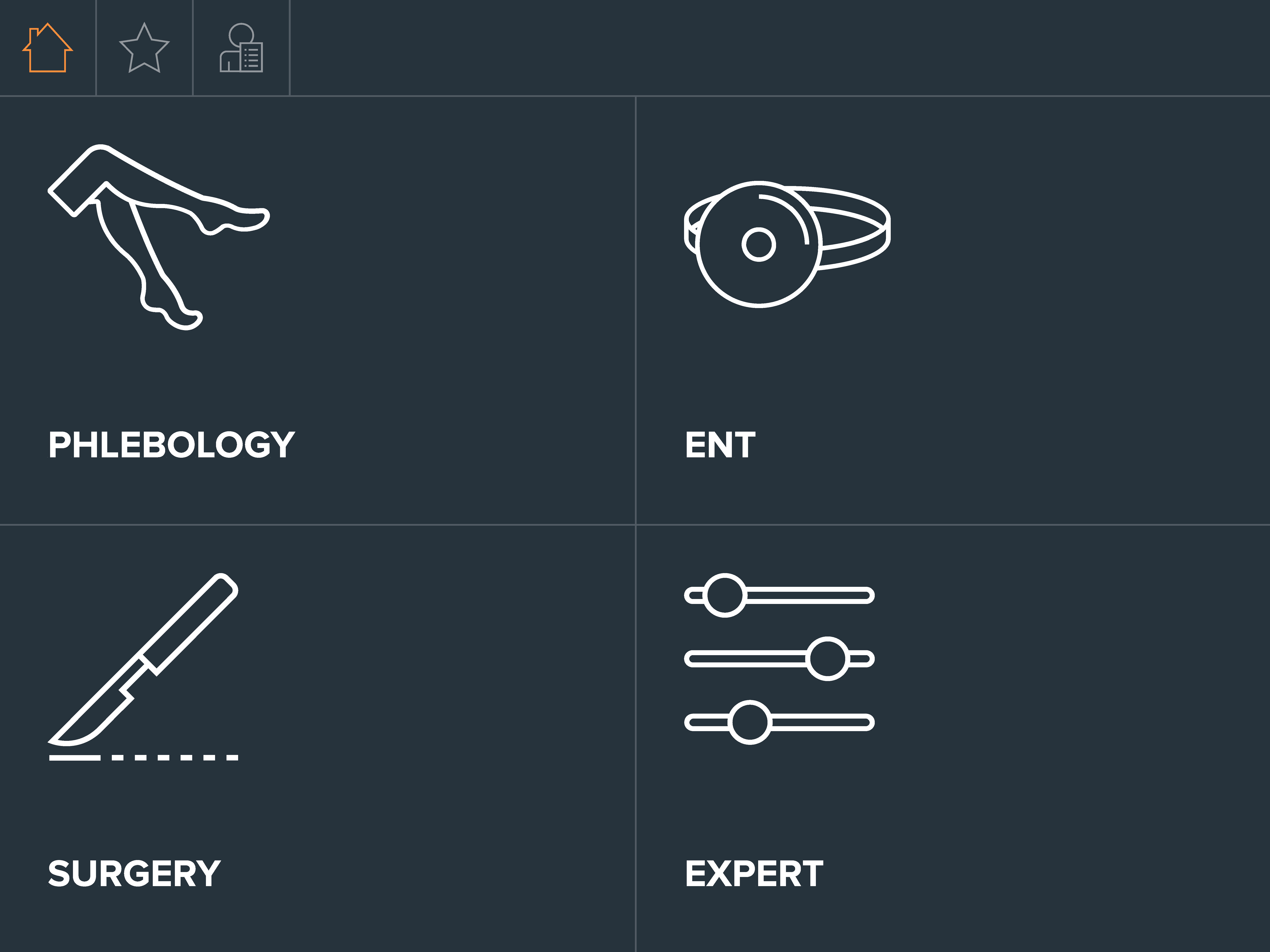
Main menu of the device
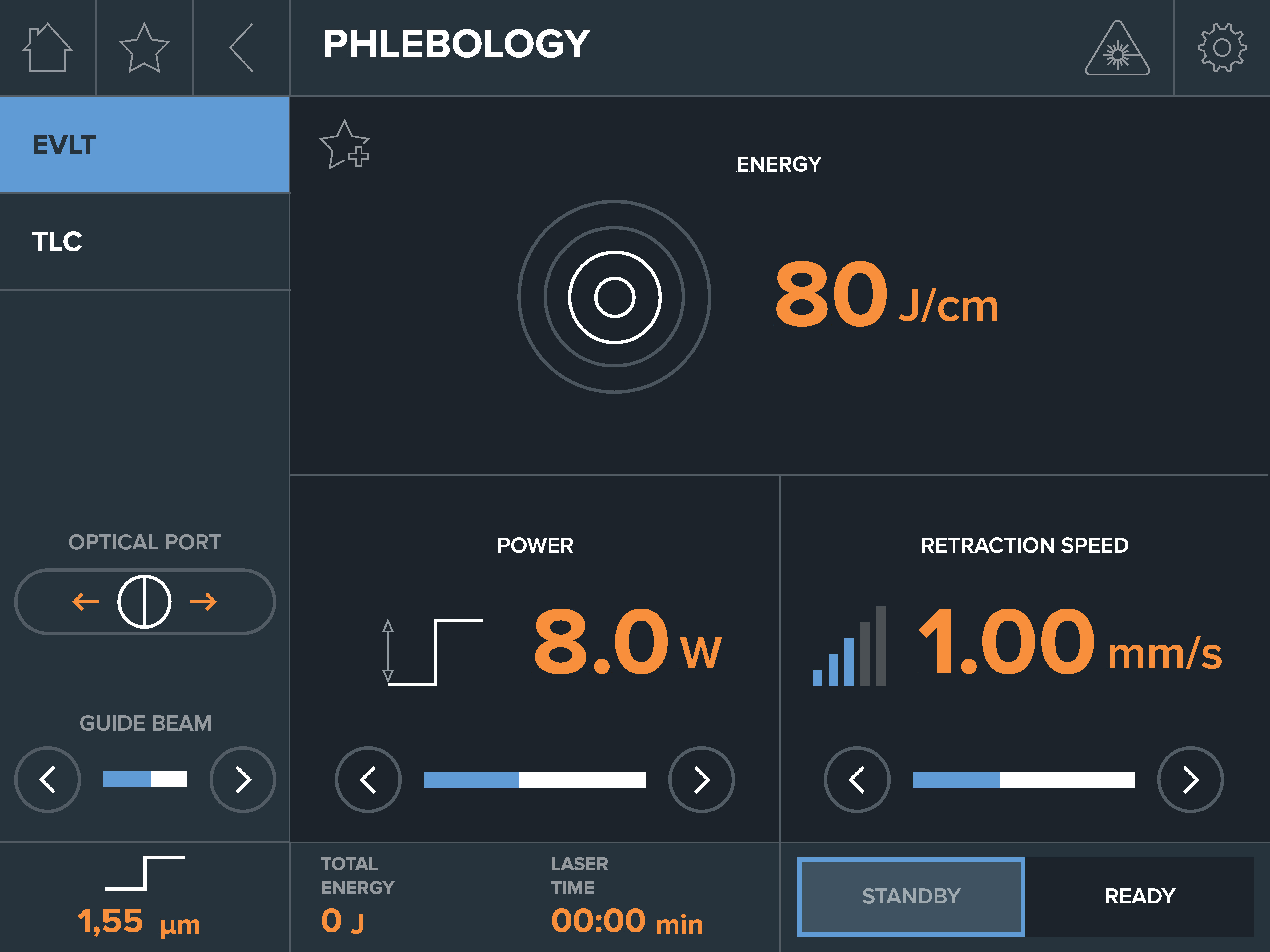
Phlebology mode
The user is offered the recommended extraction speed of the fiber tool in relation to the set power and energy parameters
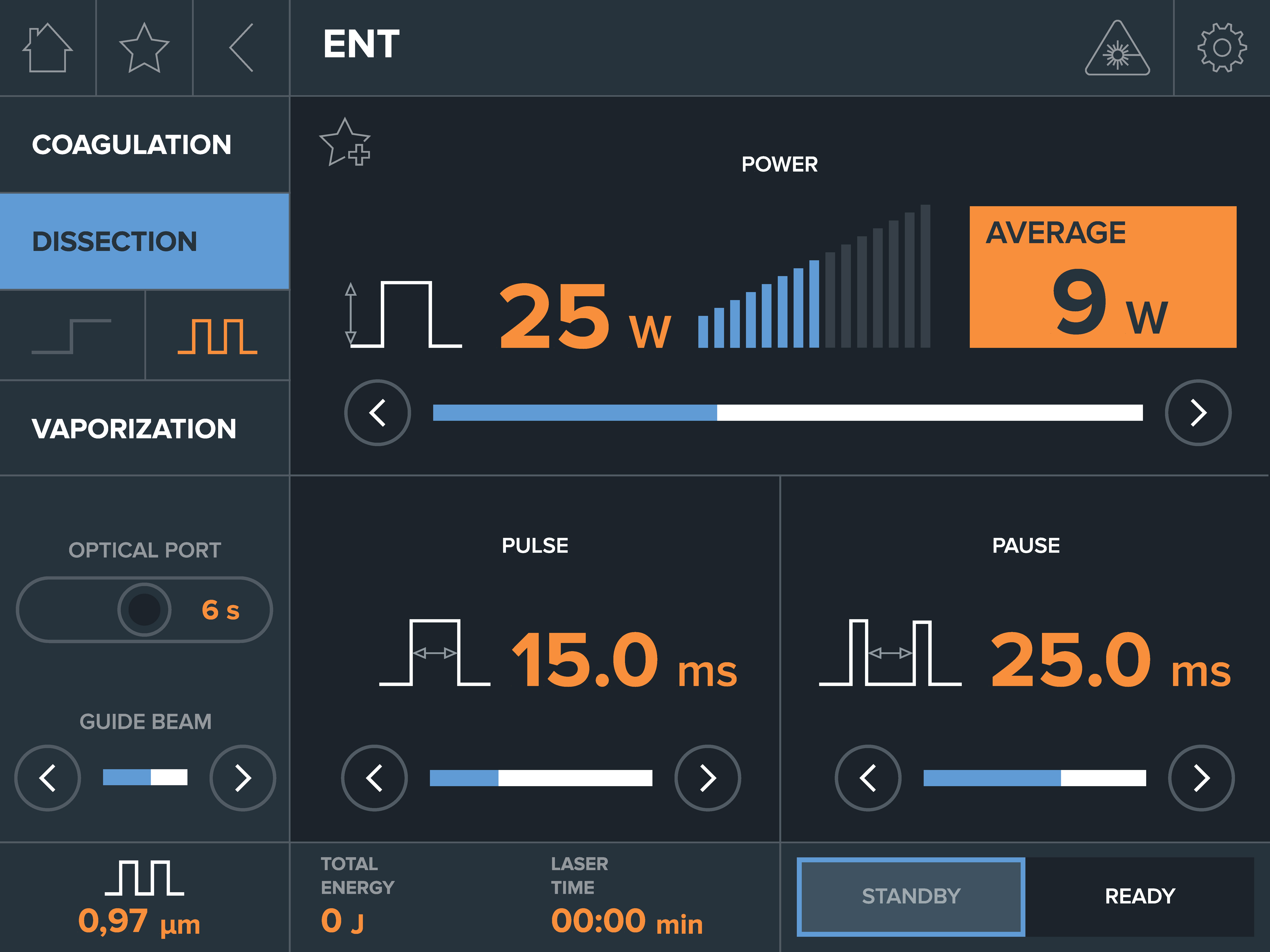
ENT mode
The wavelength of the laser radiation is set automatically when the soft tissue exposure mode is selected
Expert Mode
FiberLase S allows you to adjust two independent beams (0.97 and 1.55 microns) through a single fiber instrument
Surgery mode
The user can select continuous or pulsed mode and set parameters for power, pulse and pause duration.
Technical Specifications
|
Radiation wavelength, μm |
1.55 0.97 |
|
Maximum radiation power, W |
15 30 |
|
Mode of operation |
Continuous, pulsed, pulse-periodic |
|
Pulse duration, ms |
from 2 to 1000 |
|
Pilot laser (optional), μm |
0.52 ± 0.01 (green)or 0.65 ± 0.01 (red) |
|
Light fiber diameter, μm |
365 ... 550 |
|
Power supply voltage, V |
220 ± 10% |
|
Network frequency, Hz |
50 ... 60 |
|
Dimensions (H x W x D), mm |
253 х 310 х 419 |
|
Weight |
8 |
In addition to the standard X-Y-Z axes and laser process head, there are several optional modules and accessories that may optimize the functionality of the system in your specific application. Below are some of the the most popular options.. Please contact IPG directly if you have additional requirements
Rotary Stage, A or
C axes, Direct Drive
High-precision, high-speed rotary stage with continuous motion synchronized to X-Y-Z axes
- Servo-driven rotary stage
- Brushless direct drive.
- Travel +/- 360° continuous
- Rotation speed: 600 rpm max
- Accuracy: 10 arc-sec
- Bi-directional repeatability: 4 arc-sec
- Pneumatic ER25 Collet Chuck
- Includes an additional axis of motion control
Rotary Stage, A or C axes, Gear Drive
Rotary stage with continuous motion synchronized to X-Y-Z axes
- Servo gear/belt-driven rotary stage
- Travel +/- 360° continuous
- Rotation speed: 30 rpm max
- Accuracy: +/- 180 arc-sec
- Bi-directional repeatability: +/- 45 arc-sec
- 5C Collet, 3 Jaw Chuck
- Includes an additional axis of motion control
Rotary Stage, B axis, Gear Drive
Rotary stage with continuous motion
- Servo gear/belt-driven rotary stage
- Travel +/- 90° continuous
- Rotation speed: 30 rpm max
- Accuracy: +/- 180 arc-sec
- Bi-directional repeatability: +/- 45 arc-sec
- Includes an additional axis of motion control
Coaxial Viewing Package
Camera system aligned with laser beam axis.
- Coaxial viewing system is integrated into laser head to provide live feedback on part positioning
- Package includes software with crosshair generator to display video feed
Power Meter
Laser power meter with stage-mounted detector for periodic verification of power on target. Useful for verifying performance of process head optics and coverslide.
Fume Extractor
- High flow-rate fume extractor for collection of smoke, fumes and air-borne debris.
- Flow rate of 380 m3/hr (220 cfm)
- 3-Stage filtering
- Reverse flow filter technology
- Real-time airflow reading
- Remote diagnostics
Automatic Doors
- Pneumatic actuator to automate slide door which can be controlled via HMI software or G-code
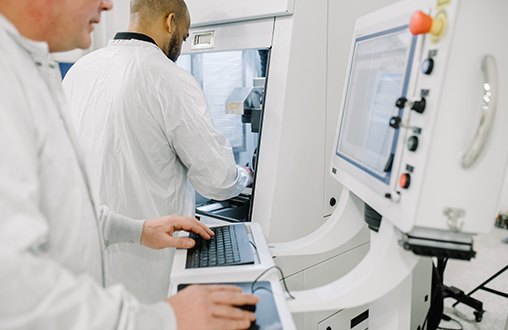
Multi-Axis Workstation Software
The Multi-Axis family of workstations are high-accuracy platforms designed to take advantage of the high beam quality found in IPG’s fiber lasers. Systems can be configured using any IPG laser, with laser processing heads available for welding, cutting and scanning applications. System options can include both basic and smart vision packages, along with part identification and process verification hardware.
The Multi-Axis software integrates control of the laser, motion systems and all system components to provide easy programming of the tool using G/M code commands that are familiar to CNC machine programmers.
HMI (Human Machine Interface)
The software that runs the Multi-Axis Workstations is a customized application called HMI (Human Machine Interface) that runs as a Microsoft Windows® 7 application. It is preloaded and tested at the IPG factory and resides in the workstation’s hard drive.
The HMI program consists of four primary regions:
- System Status Indicators – Providing a constant overview of the machine status, regardless of function selected
- Function Selection Bar – Providing primary selection of module operation
- Function Control Interface – Allows intuitive set up of configuration and operating parameters
- Manual Control Bar – Enabling manual operation of the systems global functions
Three Password-Protected Levels of System Control: Engineer, Maintenance and Operator.
User screens enable the Engineer, acting as system administrator, to easily set permission levels for each HMI screen for each level of operator and set corresponding passwords.
The system can operate in manual or programmed mode, and has functions to enable Dry-Run (execution of the full program but with the laser not turned on) and Optional Stop – that will allow a pause in the processing cycle for part inspection and other uses.
Used in combination with standard G-code programming, these capabilities provide the user with a comprehensive, easy-to-use programming and operator interface.



